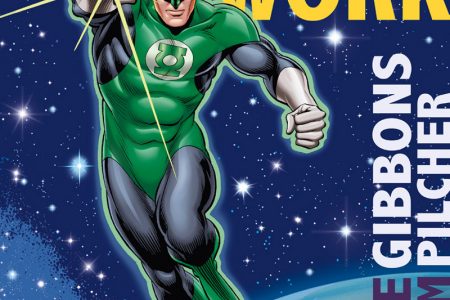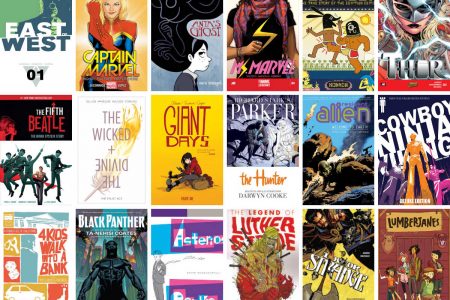I have been a comic book fan since the early to mid-1980s (as documented in this post about Uncanny X-Men #201). I have also been a hip-hop fan since then, what is commonly referred to as the Golden Age of Hip-Hop, roughly the mid-1980s to the mid-1990s (the exact dates are up to much debate), although my hip-hop fandom petered out when the excess braggadocio and rampant misogyny that pervades much of the genre became too much for me. There has always been a connection between hip-hop and Marvel comic books (see this list of 51 hip-hop variant covers plus the original albums). However, it was only recently that a spark in my brain did that thing creative people do, where two disparate ideas collide and a new connection made, and my love of comic books and Golden Age hip-hop merged into a single notion:
The Golden Age of hip-hop has strong parallels with the early days of the Marvel comic book universe.
Here I present the evidence for my hypothesis.
1. Both are primarily based in New York
Of the many aspects that made Marvel Comics so refreshing, one was that it existed in ‘the world outside your window’, i.e. in real-world locations (compared with the fictional cities used in the DC Comics universe), primarily New York and, more specifically, Manhattan (the X-Men were in Westchester, some 30 miles away, although this didn’t prove too much of an obstacle). Perhaps it was a little lazy having the adventures occur in the same place where the comic book creators worked, but it made for a cohesive, connected world.
Similarly, early hip-hop was based in New York – hip-hop was born in Harlem, NY, and many of the early pioneers were from various locations in New York, such as Queens (Run-DMC), Staten Island (Eric B. & Rakim), Brooklyn (Big Daddy Kane), Long Island (De La Soul). Obviously, this would change with the development of rappers from other cities in the USA, much as the world of Marvel Comics expanded outside the island of Manhattan – I’m not saying that the West Coast Avengers and the rise of the west coast rappers is the same – but the beginnings both hailed from the city so good they named it twice.
2. Made-up names (and alternatives)
Fantastical names are not the sole dominion on Marvel Comics, but the increased use of fantastical nicknames in addition to the superhero alias seems more Marvel than DC Comics. Mister Fantastic (Stretch), the Incredible Hulk ( Jade Jaws, Ol’ Greenskin, the Jolly Green Goliath), the Human Torch (Matchstick), Spider-Man (Web-Head).
Similarly, the approach to names for the early rappers was to use colourful monikers, from LL Cool J to Ghostface Killah to the Fresh Prince to Big Daddy Kane. In addition to these, there were the extra names that rappers used: Q-Tip referring to himself as The Abstract; Posdnuos (Plug 1) and Trugoy the Dove (Plug Two); Method Man has so many it’s ridiculous (Johnny Blaze, Iron Lung, Meth, Mr. M.e.f., Hott Nikkels, Shotgun).
3. Crossovers
One of the other great aspects of the Marvel Comic universe was the casual interactions between characters in each other’s books, with Spider-Man appearing in the Fantastic Four or Doctor Strange showing up whenever magic was needed or Daredevil or She-Hulk appearing whenever a lawyer was needed. This provided a wonderful cohesiveness to the enterprise, connecting these different people and teams in an organic and fun way.
The early hip-hop groups did the same – rappers would outright mention other rappers (I’m not talking about the diss tracks), sometimes exhaustingly so: I’m sure some tracks would be 25% shorter if there weren’t so many call-outs and ‘This goes out to’ given to various rappers. There would be actual crossovers: the Native Tongue collective of A Tribe Called Quest, De La Soul, The Jungle Brothers and Queen Latifah/Monie Love to a degree would show up on each other’s tracks, or come together on a specific single such as ‘Buddy’. Then you might have a large team-up, such as the song Flava In Your Ear, which included LL Cool J, Notorious B.I.G. and Busta Rhymes. Both paint the same picture of everybody in the same field (Marvel comics or hip-hop) knowing each other and doing stuff together.
4. Fans would speculate on who was best
Marvel fans would constantly argue over who would win in a fight between the Hulk and the Thing. Hip-hop fans would argue over who was the best rapper (the earliest heated discussion I recall in hip-hop was Rakim versus Big Daddy Kane). Both sets of fans for each character/rapper would argue for and against, passionately and sometimes just angrily, weighing in on the pros and cons, speculating without and without evidence. The fact that it doesn’t matter, as long as we got good comic books/hip-hop tracks, didn’t seem have much sway – the arguing about it was the fun part.
5. Unfavourable treatment of women
Hip-hop does not have a good history when it comes to its treatment of women in its music (this can be applied to pop music generally, but I don’t think there’s been an academic paper on it as is the case for hip-hop). As I said, it’s one of the reasons I fell out of love with hip-hop because of the constant demeaning and degrading treatment of women in rap.
Marvel Comics isn’t as misogynistic, but Stan Lee was not good with women in the early days, treating the likes of Sue Storm, Janet Van Dyne and Jean Grey as as less than equals of their colleagues (which was unfortunately indicative of the times, perhaps, but still). Thankfully, there has been a lot of work in the books subsequently to rectify those early years, but it can be a struggle to read some of the early books if you are used to the idea of women as equal to men. However, hip-hop has a long way to go, unfortunately.
6. Time capsules
Comic books, by the nature of their non-stop monthly publication schedule, are very much of their time – in a good way. The quick turnaround time means that comic books can respond to current culture in an exciting way almost immediately, far better than other fictional responses (books, television, film). The only downside is that it means they can become dated – some of the language in particular, but also the historical and pop culture references (Mark Millar is especially guilty of dated pop culture references, but that’s a complaint for another time …).
When it comes to hip-hop, there is the element of topicality because of the sheer amount of words used in a rhyme plus needing to refer to events/people/cultural touchstones for the sake of communicating fluently to the audience. It can be weird listening to them now, from cultural references that don’t mean the same, from the Arsenio Hall show, the popularity of Keith Sweat to female fans, even the bizarre references to money and Donald Trump; I mean, A Tribe Called Quest had a song called ‘Skypager’, for goodness sake. However, both are fascinating artefacts of their time, which adds an extra quality of its own.
I’m sure there are more comparisons, but I believe that I have presented sufficient evidence to support my hypothesis. You are, of course, free to disagree.




